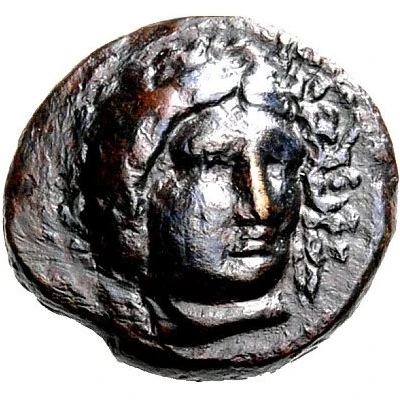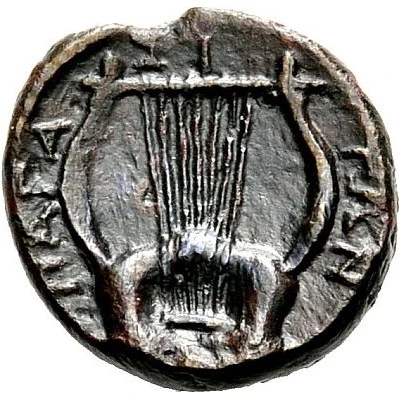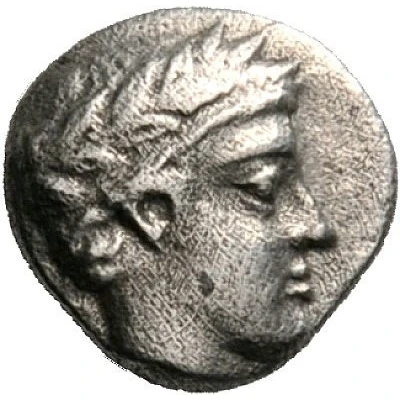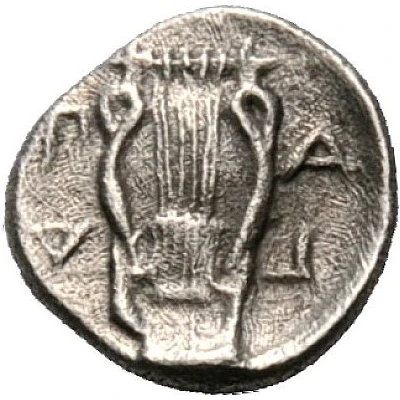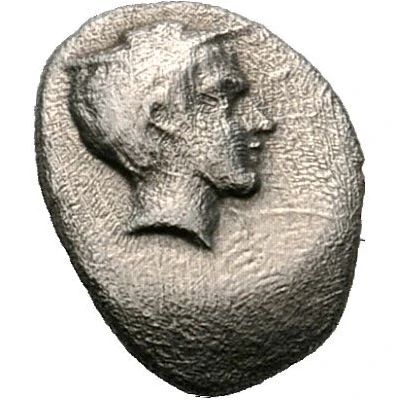
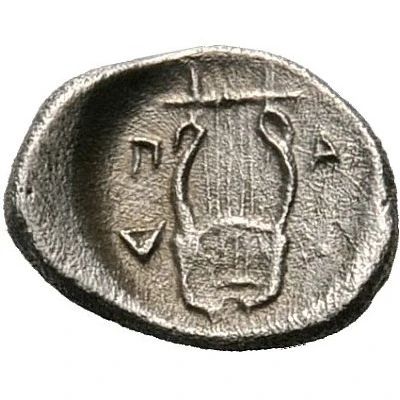

© Nomos AG
Hemiobol 375 BC - 325 BC
| Silver | 0.41 g | - |
| Issuer | Pagasai (Thessaly) |
|---|---|
| Type | Standard circulation coin |
| Years | 375 BC - 325 BC |
| Value | Hemiobol (1⁄12) |
| Currency | Drachm |
| Composition | Silver |
| Weight | 0.41 g |
| Shape | Round (irregular) |
| Technique | Hammered, Incuse |
| Demonetized | Yes |
| Updated | 2024-10-10 |
| Numista | N#170874 |
|---|---|
| Rarity index | 100% |
Reverse
Six-stringed lyre; all within shallow incuse circle
Script: Greek
Lettering:
Π Α
Γ Α
Comment
Apparently unpublished.
Interesting fact
The Hemiobol coin was used as a form of currency in ancient Greece, specifically in the region of Thessaly, and its design features a unique combination of symbols and letters. On one side of the coin, there is an image of a gorgon, a mythical creature with snakes for hair, and on the other side, there is an inscription of the letter "π" (pi) followed by a crescent moon and a star. This design was meant to represent the city of Pagasai and its connection to the goddess Artemis, who was revered in the region. The use of the gorgon image and the crescent moon and star symbols also had specific meanings in ancient Greek culture, with the gorgon representing protection and the crescent moon and star representing the goddess's association with the night and the heavens. Overall, the Hemiobol coin is a fascinating example of ancient Greek currency and symbolism.
